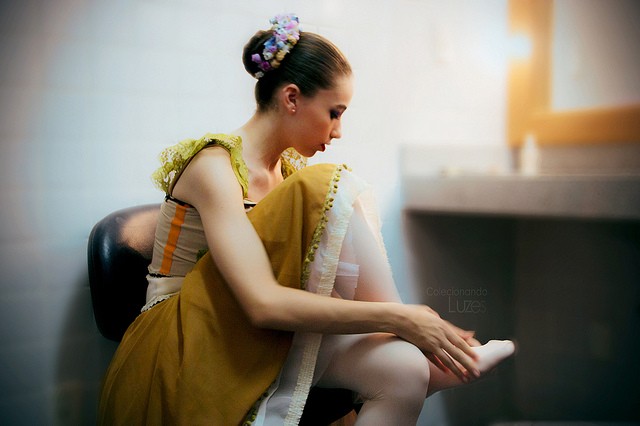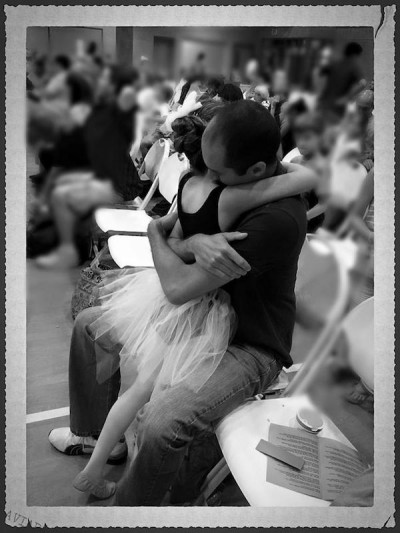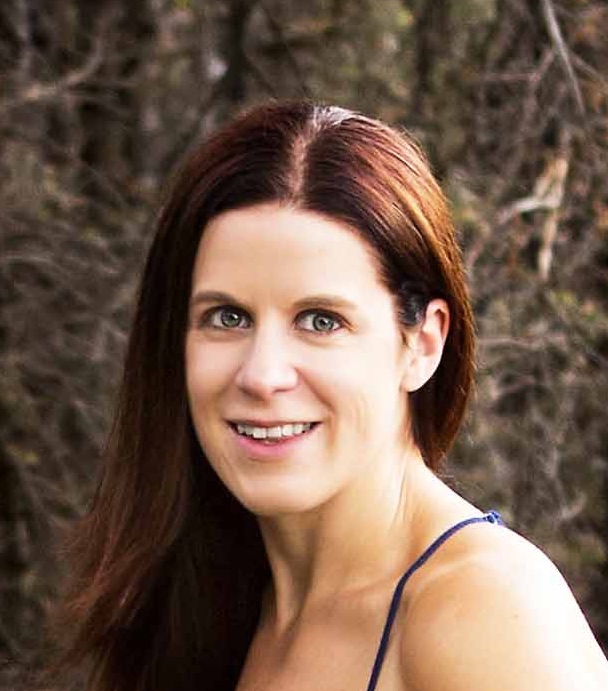
I am struck by the many reasons we dance.
In talking with teachers, parents, and dancers about a recent performance, I heard the declaration of so many different motivations. Each group had their own reasons for participating in the show and each group felt that those reasons were validated by the experience. The best thing about hearing everyone’s comments was realizing that these different motivations all overlap and compliment each other.
But before the stage comes the studio and the many reasons we choose to dance…
Ideally, the studio is a sacred place where problems are left at the door and the outside world takes a backseat to practice. In the past year, I’ve seen students who are motivated by a love of movement, by fitness, and by the enduring allure of a tutu and tights. I’ve heard parents express an interest in the discipline of dance, the health benefits, the socialization, the intellectual stimulation, and simply the fun and enjoyment that it brings their children.
As a teacher, I want all of these things for my students.
I’m working for healthy bodies and minds that love to move and continue to be stimulated by new and different concepts, including those beyond dance technique. I love watching students grow and change and I try my very best to acknowledge those changes. This year alone, I’ve seen students with severe separation anxiety become well-adjusted, creative, and independent movers. I’ve seen dancers with disabilities improve in their dancing and overcome physical limitations. I’ve seen students make connections and create imagery that have improved their dancing as well as their understanding of how their own bodies function.
Most importantly, I’ve seen students engage. From two-and-a-half all the way through to adulthood, I’ve seen students engage their bodies and minds in the process of movement: technique, patterns, rhythm, shapes, speed, energy, and flow. We don’t just practice a dance. We engage in the practice of dance, with all the intricacies that it requires.
The studio is our home, our lab, our workshop, our space to learn, move, and grow. The stage is our means of sharing those achievements.

So many of our dancers were visibly excited at the prospect of dancing on stage. Tutus, costumes, and a chance to “show off” their skills was enough to make some of them bounce up and down. Parents expressed their appreciation for the opportunity provided their children to dance and perform on the stage. Some of them went into this day hoping their child would grow to the occasion and, without exception, they did. There were tears, cold feet, and a few melt downs, but they did it. I saw dancers on the autism spectrum perform at the same level as their peers, dancers overcome congenital limitations, and dancers who struggled through stage fright and separation anxiety to show their heartfelt love of dance. Moreover, I saw an audience who was none the wiser to each and every one of these extraordinary accomplishments. More than just showing off their dances, all of the dancers showed off their bravery, their love of movement, their excitement, their skill, and their progress.
The stage shines a light on everything our dancers have learned, and, while we’re proud to show our dances, we are far happier to show our ability to dance with all of the behind-the-scenes learning and growth that it requires.
 Jennifer Lawrence is a studio owner and dance teacher in Morgantown, WV. She has more than 15 years of teaching experience and specializes in ballet, pre-ballet, creative movement, and teaching language through movement. Jennifer also has a PhD in French Language and Literature from the University of Pittsburgh and is in the process of creating a pilot program teaching French through dance and creative movement.
Jennifer Lawrence is a studio owner and dance teacher in Morgantown, WV. She has more than 15 years of teaching experience and specializes in ballet, pre-ballet, creative movement, and teaching language through movement. Jennifer also has a PhD in French Language and Literature from the University of Pittsburgh and is in the process of creating a pilot program teaching French through dance and creative movement.
www.artistryhouse.com

Dance Advantage welcomes guest posts from other dance teachers, students, parents, professionals, or those knowledgeable in related fields. If you are interested in having your article published at Dance Advantage, please see the following info on submitting a guest post. Read posts from guest contributors.

